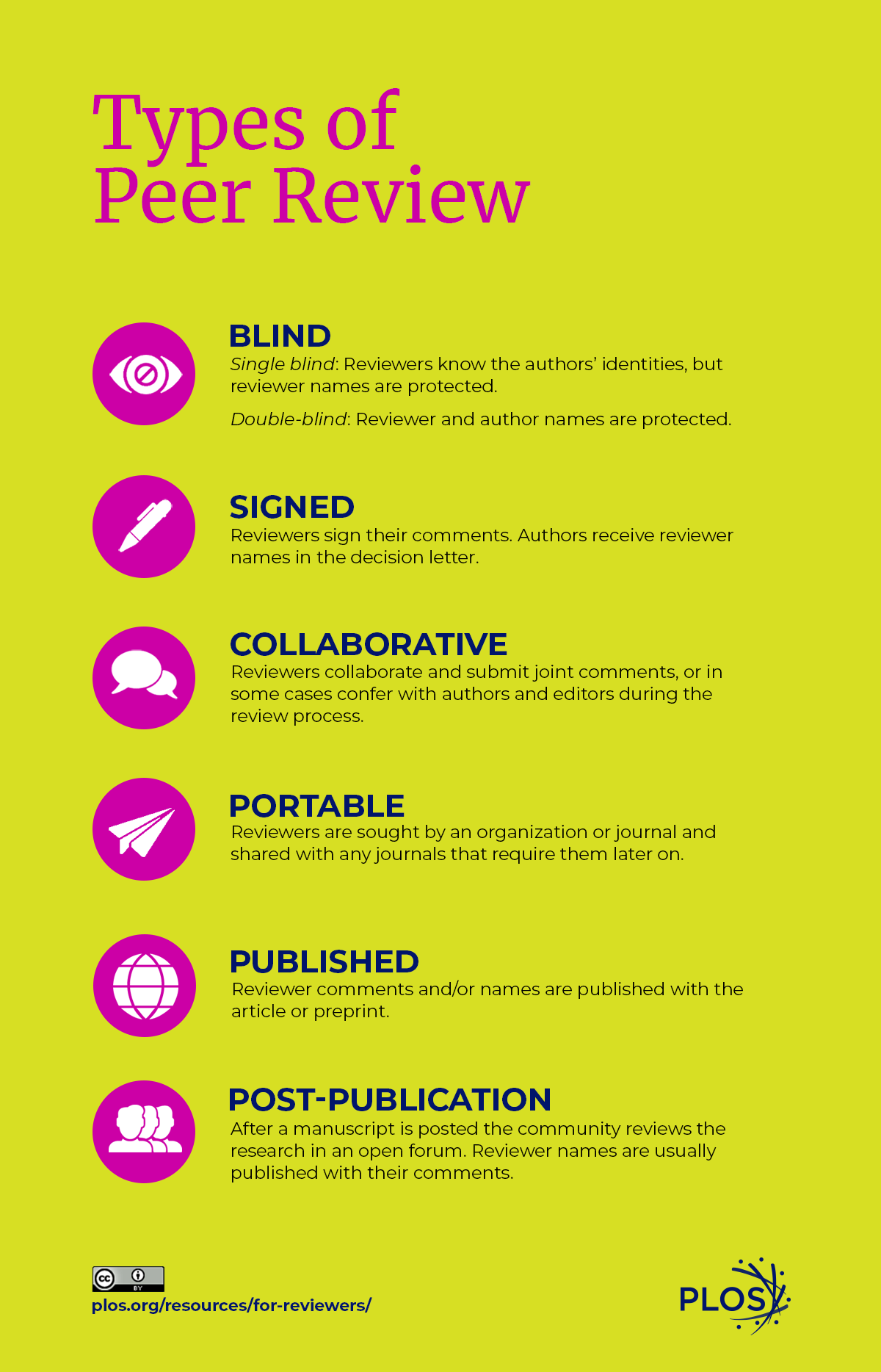
Peer review is a formal process used for reviewing and editing scientific writing for publication. It is an essential component of the scholarly publishing process. When done correctly, it is a vital part of building trust and maintaining high standards of quality for published research. Here are the main steps in the process:
| Source type | Peer reviewed? |
|---|---|
| Research article in a peer-reviewed journal | ✅ |
| Chapter in an edited volume or "scholarly book" | ❓1 |
| Dissertations | ❓2 |
|
Conference proceedings |
❓3 |
|
Preprints |
⛔️ |
|
Monographs (books by individual authors or groups rather than collections of essays) |
⛔️ |
|
Book reviews published in peer-reviewed journals |
⛔️ |
|
Editorials, letters to the editor, and other short pieces featured in peer-reviewed journals |
⛔️ |
1 Book chapters published in edited volumes may or may not have gone through a peer review process. This is dependent on the policies of the publishers of the book. Look for information about their review process on their website.
2 Dissertations go through a rigorous review as part of the author's defense process for their PhD. If the author is successful, they are usually able to publish their dissertation through the university's repository, but they may also choose to submit parts of it for publication in academic journals or other forums, in which case it would undergo further reviews, including peer review.
3 Conference proceedings may go through anything from a brief review for publishability, all the way to a traditional peer review process. This depends on the organization responsible for hosting the conference and publishing the proceedings. Look for information about their review process on their website
To determine whether your article is peer reviewed, you need to find out if the journal it is published in is peer reviewed (also known as "refereed"). There are a few quick ways to do this:
 .
.